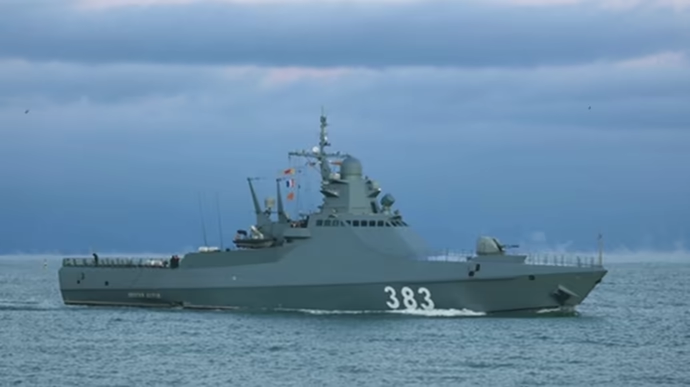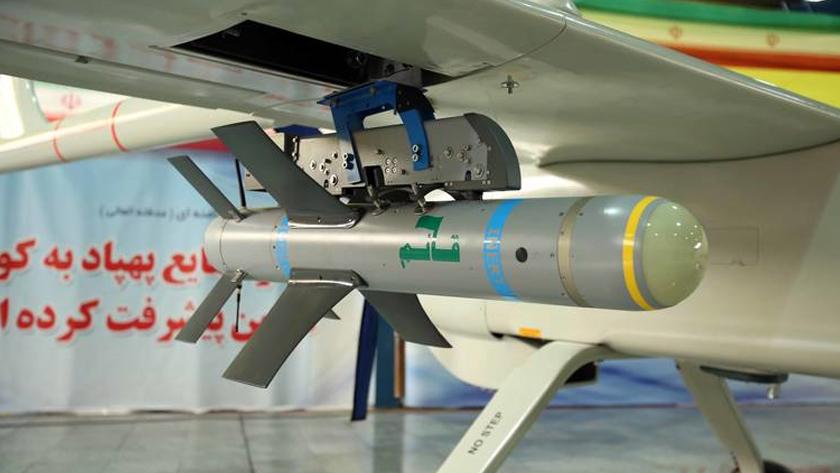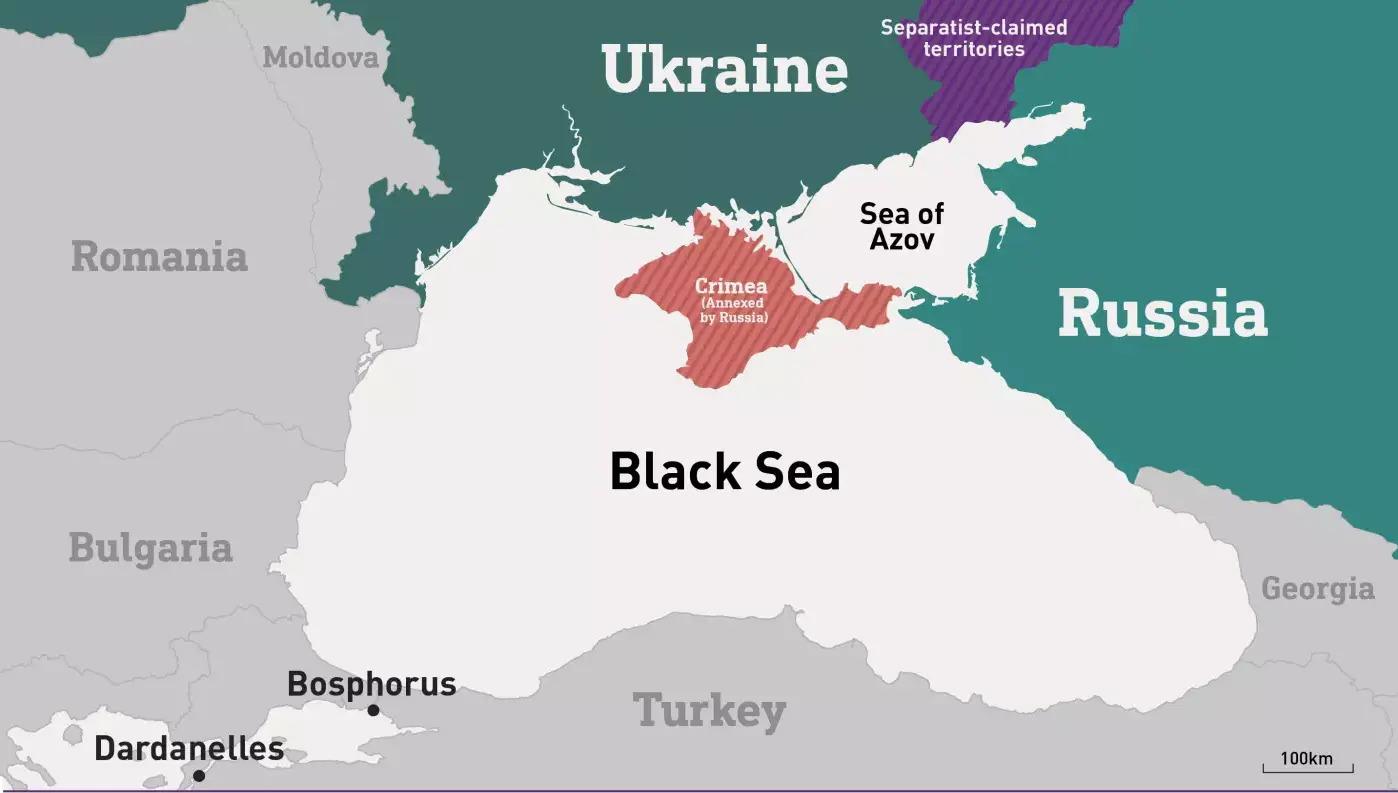Russian deployment of Iranian drones escalates Black Sea tensions A game-changer in the conflict?
Amidst the escalating tensions in the Black Sea region, the British Army Intelligence Service has uncovered crucial information pointing towards Russia's strategic deployment of Iranian Mohajer-6 unmanned aerial vehicles (UAVs) in Crimea.
This development, unveiled on March 8, comes amidst heightened tensions in the Black Sea region, seen as a direct retaliatory measure against intensified attacks by Ukrainian forces on Russian naval resources.
The presence of these advanced drones raises concerns about the potential implications for regional security and underscores the evolving nature of modern warfare tactics in the volatile Black Sea theatre.
UK concerns over use of Iranian drones
The Defence Intelligence of the United Kingdom has shed light on Russia's utilization of Iranian drones, particularly the Mohajer-6, over the Black Sea and Ukrainian territories, prompting regional security concerns.
The ministry also shared a satellite image which proved the presence of the Iran-made drone right beside a UAV ground control station in the airfield. The image was taken by an Airbus satellite on February 23.
According to the assessment report, the Mohajer-6 drones have been observed conducting reconnaissance, surveillance, and target acquisition operations over both the Black Sea and the Ukrainian city of Kremenchuk. Notably, these drones are capable of dropping guided bombs, adding another layer of threat to the situation.

The intelligence analysis suggests that Russia's continued possession of these drones in the occupied Crimea may indicate an attempt by Russian forces to identify potential threats to Russian ports and vessels, especially following recent successes by Ukraine.
“The continued presence of the system in western Crimea is likely evidence of Russia trying to identify threats to Russian ports and vessels following recent Ukrainian successes,” read the statement issued by the ministry on X.
Furthermore, there is speculation that the drones may be involved in supporting Russian targeting processes for the southwest Ukrainian coastline.
The report recalls past incidents involving the Mohajer-6 drones, including Ukraine's destruction of at least one such drone over the Black Sea on September 23, 2022, and Russia's accidental shooting down of a similar drone over Crimea on June 6, 2023.
In a broader context, UK Defence Intelligence has been closely monitoring Russia's activities in the region, including its goals and capabilities. Previous assessments highlight Russia's losses in the Black Sea region over the past five weeks, further underscoring the volatile dynamics at play.

For instance, Ukraine's Defence Intelligence (DIU) confirmed a significant escalation in tensions with the sinking of the Russian Black Sea Fleet patrol ship Sergei Kotov on March 5. The vessel was deliberately targeted and destroyed during an attack orchestrated by Group 13, a specialized unit within the DIU, working in conjunction with the Ukrainian Navy and backed by Ukraine’s Ministry of Digital Transformation. Employing Magura V5 maritime drones, the strike caused substantial damage to the Russian ship within Ukrainian territorial waters near the Kerch Strait, the agency said.
The deployment of UAVs in Crimea signifies a significant escalation in maritime confrontations between Russia and Ukraine, further exacerbating the already volatile situation in the region. These Iranian-made drones are known for their advanced surveillance capabilities and are expected to provide Russian forces with enhanced reconnaissance capabilities over the Black Sea.
The British Army Intelligence Services, known for their thorough assessment and surveillance of global security risks, have expressed concern over the presence of Iranian drones, now under Russian command in Crimea. This development raises apprehensions regarding Russia’s heightened military capabilities and the potential for escalated aggression in the region.
Analysts suggest that Russia's decision to deploy Mohajer-6 UAVs in Crimea is a calculated move aimed at bolstering its defence posture and countering Ukrainian offensive operations targeting Russian naval assets.
Mohajer-6's role in bolstering Russian military capabilities
The Mohajer-6 drones, designed for Intelligence, Surveillance, Target Acquisition, and Reconnaissance (ISTAR) tasks, possess the ability to carry out air-to-surface strikes using laser-guided munitions, providing its operator with advanced air-to-ground strike capabilities.
The Mohajer-6 UAV, a significant achievement in Iranian unmanned aerial vehicle technology, combines advanced design and sophisticated technical capabilities tailored for comprehensive surveillance and precise combat roles. It entered service with the IRGC Navy in 2018, powered by a reliable Rotax 912ULS engine.
With a wingspan of 10 meters and a length of 5.67 meters, it strikes a balance between operational range and payload capacity. It can carry up to 40 kg of sensors and weapons while weighing 450 kg empty and up to 600 kg at maximum takeoff. With speeds reaching 200 km/h and a minimum operational speed of 100 km/h, it's versatile for both slow surveillance and rapid response tasks.
Fitted with advanced sensors and electronic warfare gear, the Mohajer-6 conducts day and night operations using third-generation visual and infrared surveillance cameras with a range of up to 55.6 km. It utilizes a laser designator for precise targeting at distances of up to 18.5 km. With a variety of guided weapons like Qaem 1 and Qaem 5, Almas, and Sadid-345 series, it can engage targets up to 8 km away. Additionally, it can deploy both conventional and laser-guided Hydra 70mm and Fadak 80mm rockets, bolstering its role as a potent asset in modern aerial warfare, where versatility and precision are paramount.

In contrast to the single-attack Shahed-136 drones also utilized by the Russian Armed Forces in Ukraine, the Mohajer-6 is a versatile UAV capable of returning to base after each strike. This feature enhances its sustainability and flexibility in operations. Moreover, with its cost-effective production and impressive performance, the Mohajer-6 drones serve as a valuable asset for any military seeking affordable yet high-performing UAVs, with Russia exemplifying their effective utilization.
The deployment of Iranian drones, notably the Mohajer-6, has significantly bolstered Russian military operations in the ongoing conflict in Ukraine. Reports indicate that these drones are playing a crucial role in enhancing the Russian military's capabilities, particularly in threat detection and targeted attacks on Ukrainian positions. These UAVs are strategically employed to improve Russian military activities, notably along the southwestern Ukrainian coast, amidst a growing number of Ukrainian assaults on Russian naval units.
Mohajer-6 drones as modern warfare evolution
Ukrainian forces' heightened offensive operations against the Russian Navy have prompted Moscow to reassess its military capabilities and adopt innovative measures to maintain superiority in situational awareness and defence.
The deployment of drones such as the Mohajer-6 signifies a significant departure from traditional defence tactics, emphasizing the growing reliance on unmanned technology in modern warfare.
The strategic employment of drone technology underscores the evolving nature of military engagement strategies, with unmanned aerial vehicles playing an increasingly pivotal role in conducting the war. By leveraging advanced surveillance capabilities, Russia aims to effectively monitor and respond to threats posed by Ukrainian forces in the Black Sea.

As the conflict persists between Ukrainian and Russian forces in the Black Sea region, the importance of this area as a military theatre of operations becomes more evident. Both sides are intensifying their preparations for further escalations, deploying sophisticated technologies and engaging in international partnerships that underscore the complex dynamics at play, with significant implications for regional and global security.
The utilization of advanced unmanned systems, notably the Mohajer-6 UAV, in this conflict, exemplifies the evolving nature of warfare strategies and the pivotal role of technological advancements in shaping contemporary military operations.
International concern over Iranian involvement
Amid the ongoing conflict in Ukraine, Western reports have surfaced alleging that Iran has been involved in supplying drones to Russia, potentially tipping the scales of the war in favour of the Russian forces. These claims have been echoed in Iranian media, sparking international concern and scrutiny.
The delivery of these sophisticated drones raises serious questions about Iran's involvement in the conflict and its impact on the balance of power in the region. With the potential deployment of these advanced UAVs, the Russian Armed Forces could gain a significant advantage, potentially altering the trajectory of the conflict in Ukraine.
The Mohajer-6 drones, described as possessing highly lethal features, could drastically change the dynamics of the ongoing conflict. Their advanced capabilities could provide the Russian military with enhanced reconnaissance, surveillance, and strike capabilities, further intensifying the pressure on Ukrainian forces.
International observers have expressed deep concern over these allegations, highlighting the need for thorough investigation and accountability. Any confirmation of Iran's involvement in supplying drones to Russia would likely have far-reaching implications, not only for the conflict in Ukraine but also for regional stability and international relations.








